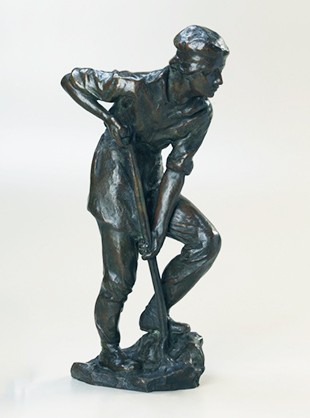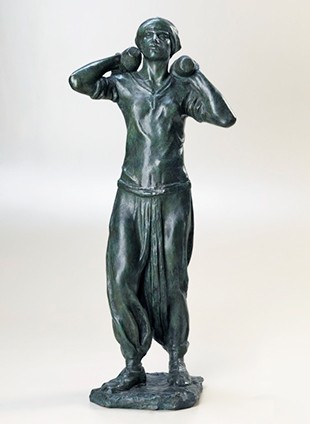The forgotten artists who commemorated Canada's women war workers
Frances Loring and Florence Wyle are two artists whose names every Canadian should know. Janice Anderson, an affiliate professor in the Department of Art History, has studied the sculptors and their work.
At the end of the First World War, sculptors Frances Loring (1887-1968) and Florence Wyle (1881-1968) were commissioned by the Canadian War Memorials Fund to record wartime activities at home in Canada.
“The Girls,” as they were affectionately known, produced numerous bronze statuettes of people at work in industry and agriculture, with a focus on women workers.
Their art represented a completely new way of looking at women, both physically and ideologically, preserving the integrity of their figures while no longer presenting them as objects of the male gaze. Instead, the focus was on their physical strength.
Born in the United States, Loring and Wyle moved in 1913 from New York City to Toronto, where they remained for the rest of their lives. Their home, nicknamed “The Church,” became a gathering place for many prominent Canadian artists of the time, including Elizabeth Wyn Wood, Emanuel Hahn and A.Y. Jackson.
 “On The Land” by Florence Wyle, Beaverbrook Collection of War Art, Canadian War Museum | Photos courtesy of the Canadian Museum of Civilization Corporation
“On The Land” by Florence Wyle, Beaverbrook Collection of War Art, Canadian War Museum | Photos courtesy of the Canadian Museum of Civilization Corporation
Biographer Elspeth Cameron wrote that Jackson was a particular fan of the sculptors’ war worker sculptures.
 “The Shell Finisher" by Frances Loring, Beaverbrook Collection of War Art, Canadian War Museum
“The Shell Finisher" by Frances Loring, Beaverbrook Collection of War Art, Canadian War Museum
The Group of Seven artist claimed they made him want “to knock down all the statues in Toronto and let [Florence and Frances] replace them with anything [they] wish.”
The Girls received commissions for a number of war memorials and fountains, as well as important national monuments, including Loring’s statue of Sir Robert Borden, which stands on Parliament Hill in Ottawa. Both were founding members of the Sculptors Society of Canada, formed in 1928, and worked tirelessly to promote and support other artists, particularly women sculptors.
Like many of the country’s women artists, Loring and Wyle have been overlooked in the history of Canadian art, a lacuna that the Canadian Women Artists History Initiative at Concordia University is trying to remedy.
Their contributions to the art of the 20th century in Canada were significant and are deserving of more celebration.